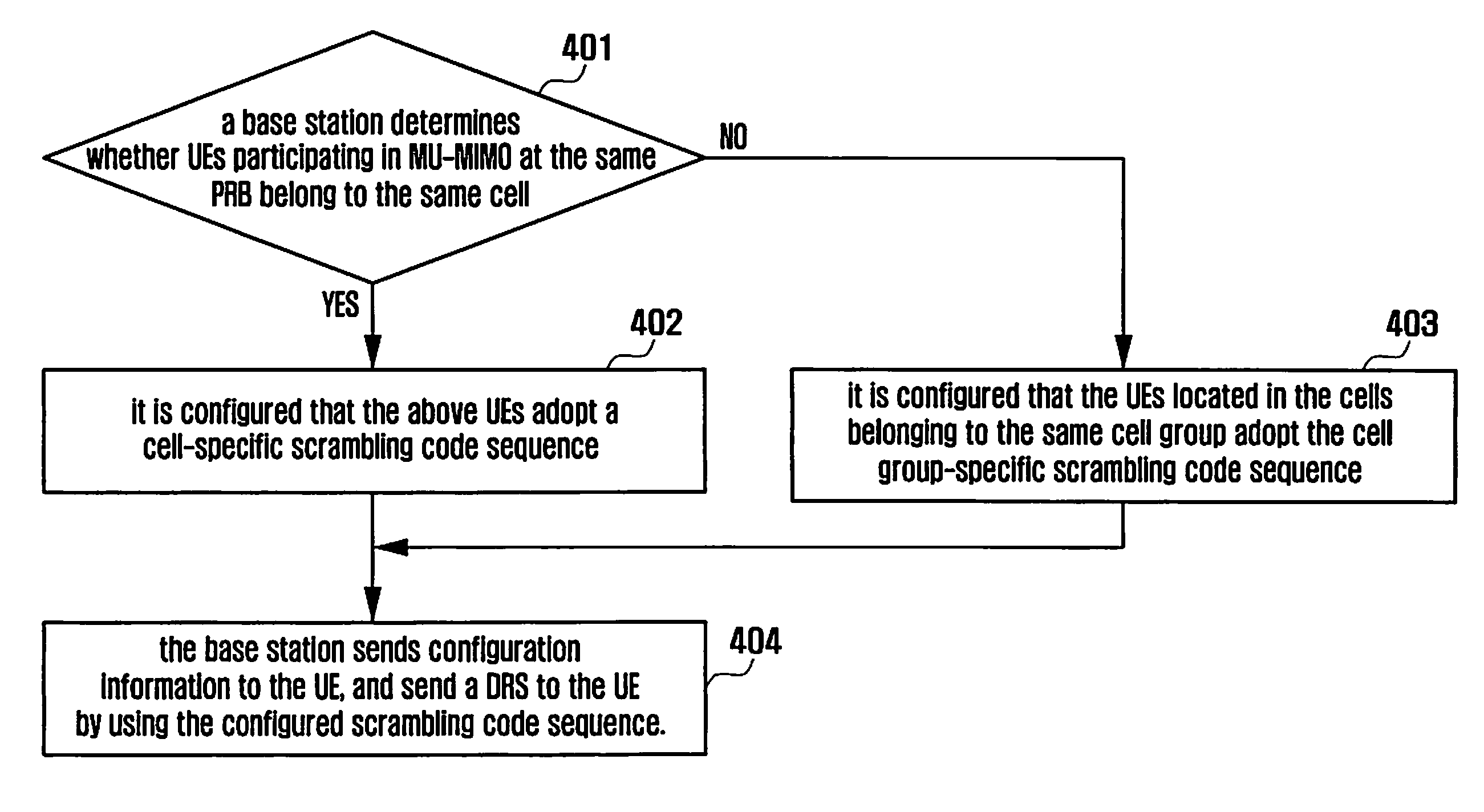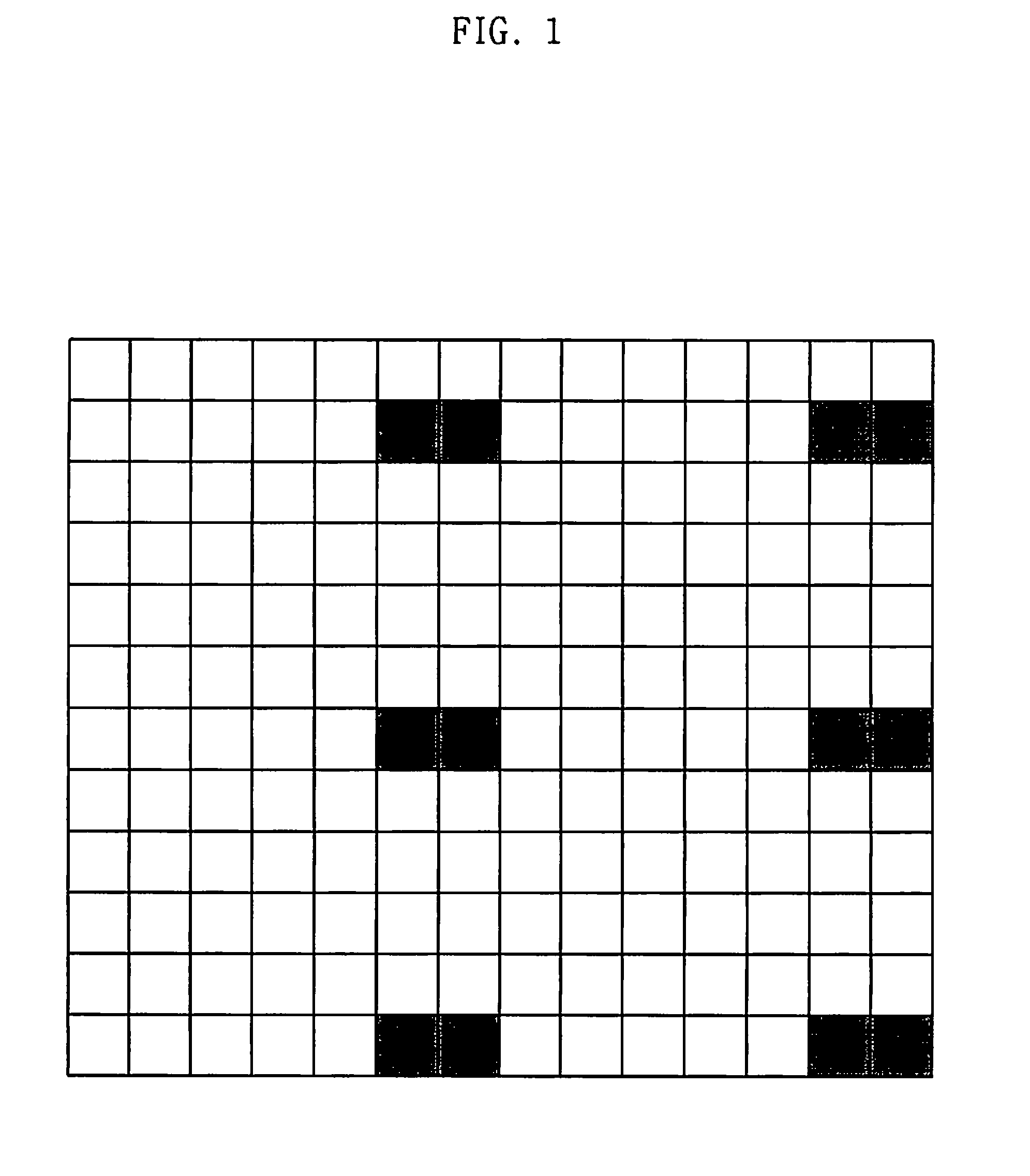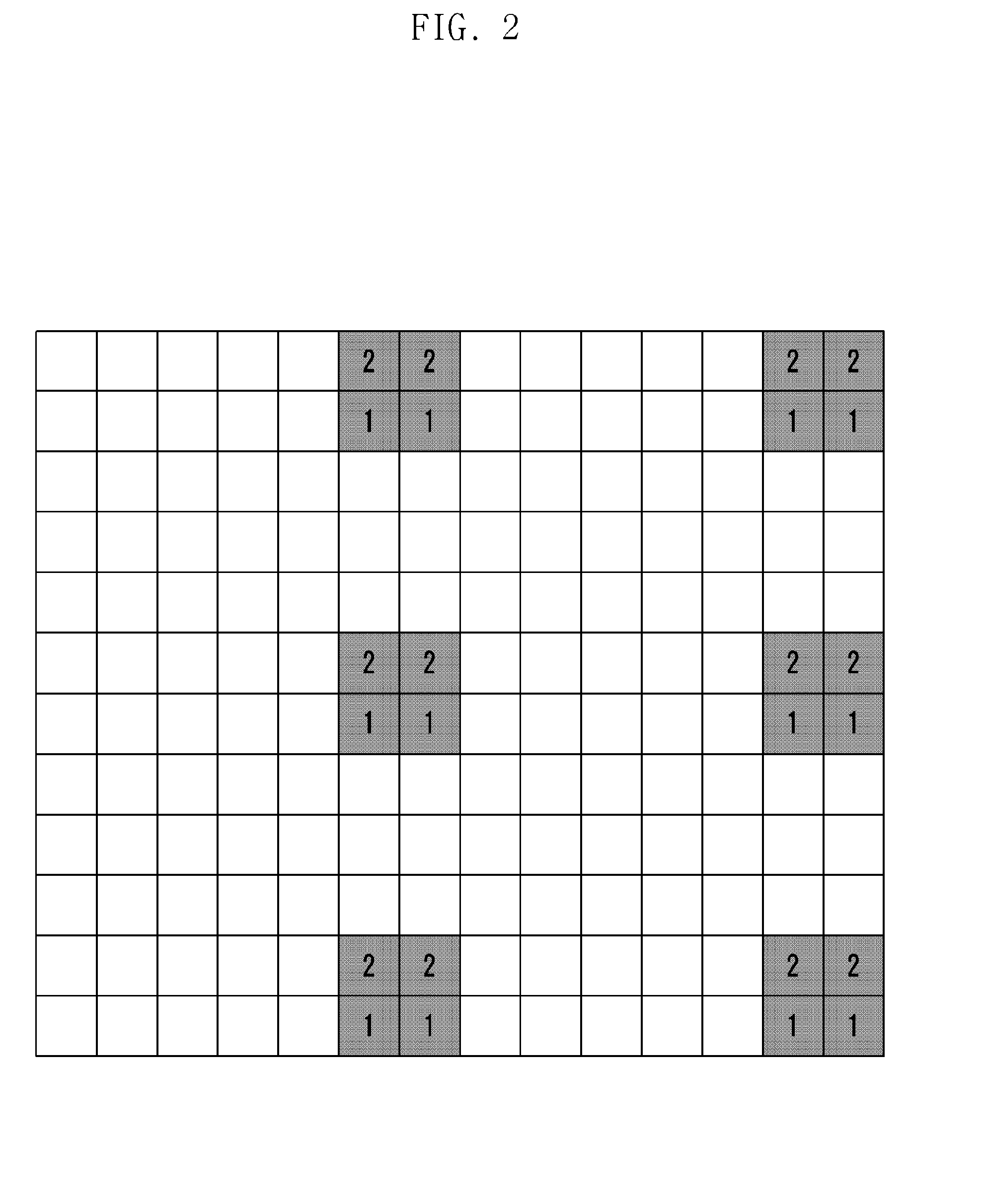Method and apparatus for transmitting dedicated reference signal
a reference signal and signal technology, applied in the field of mobile communication technologies, can solve the problem that the ue cannot restrain the drs interference between different cells, and achieve the effect of effectively restrainting the drs interference and improving the accuracy of channel estimation
- Summary
- Abstract
- Description
- Claims
- Application Information
AI Technical Summary
Benefits of technology
Problems solved by technology
Method used
Image
Examples
first embodiment
[0047]The first embodiment, the cell-specific scrambling code sequence and the cell group-specific scrambling code sequence are both supported at each DRS RE group.
[0048]If all the DRS REs belong to the same group, as shown in FIG. 5, this DRS group supports two types of scrambling code sequences at the same time. The initialization code of the cell-specific scrambling code sequence may be generated according to the identity of the cell NIDcell and a number of a time slot in which the current PRB is located ns, for example according to cinit=(└ns / 2┘+1)·(2NIDcell+1)·216; the initialization code of the cell group-specific scrambling code sequence may be generated according to the identity of the cell group NIDgroup and the number of the time slot ns, for example according to cinit=(└ns / 2┘+1)·(2NIDgroup+1)·216+NIDgroup.
[0049]If the DRS REs are divided into multiple groups, as shown in FIG. 6, it is supported that the DRS REs are divided into two groups, and the two DRS groups support t...
second embodiment
[0053]The second embodiment, each DRS RE group supports one of the cell-specific scrambling code sequence and the cell group-specific scrambling code sequence, and one type of the scrambling code sequences is configured for one part of the DRS RE group, and the other type of the scrambling code sequences is configured for the other part of the DRS RE group.
[0054]It is supported that there are two DRS RE groups, and one DRS RE group is configured to support the cell-specific scrambling code sequence, and the other DRS RE group is configured to support the cell group-specific scrambling code sequence. As shown in FIG. 7, the cell-specific scrambling code sequence is configured on the first DRS RE group, the initialization code of the cell-specific scrambling code sequence may be generated according to the identity of the cell NIDcell, the number of the time slot ns and a sequence number nSCID, for example according to cinit=(└ns / 2┘+1)·(2NIDcell+1)·216+nSCID.
[0055]The cell group-specif...
third embodiment
[0059]The third embodiment, one type of the scrambling code sequences is configured for one part of the DRS RE groups, and two types of the scrambling code sequences are configured for the other part of the DRS RE groups.
[0060]It is still supported that there are two DRS RE groups, as shown in FIG. 8, the cell-specific scrambling code sequence may be configured for the first DRS RE group, and the cell group-specific scrambling code sequence and the cell-specific scrambling code sequence are configured for the second DRS RE group.
[0061]In the embodiment, for the DRS RE group for which two cell-give scrambling code sequences are configured, the initialization code of the cell-specific scrambling code sequence may be generated according to the identity of the cell NIDcell, the number of the time slot ns and the sequence number nSCID, for example according to cinit=(└ns / 2┘+1)·(2NIDcell+1)·216+nSCID, herein nSCID ∈ {0,1}, which can support multiple UEs in the same cell; if only one cell-...
PUM
 Login to View More
Login to View More Abstract
Description
Claims
Application Information
 Login to View More
Login to View More - R&D
- Intellectual Property
- Life Sciences
- Materials
- Tech Scout
- Unparalleled Data Quality
- Higher Quality Content
- 60% Fewer Hallucinations
Browse by: Latest US Patents, China's latest patents, Technical Efficacy Thesaurus, Application Domain, Technology Topic, Popular Technical Reports.
© 2025 PatSnap. All rights reserved.Legal|Privacy policy|Modern Slavery Act Transparency Statement|Sitemap|About US| Contact US: help@patsnap.com



